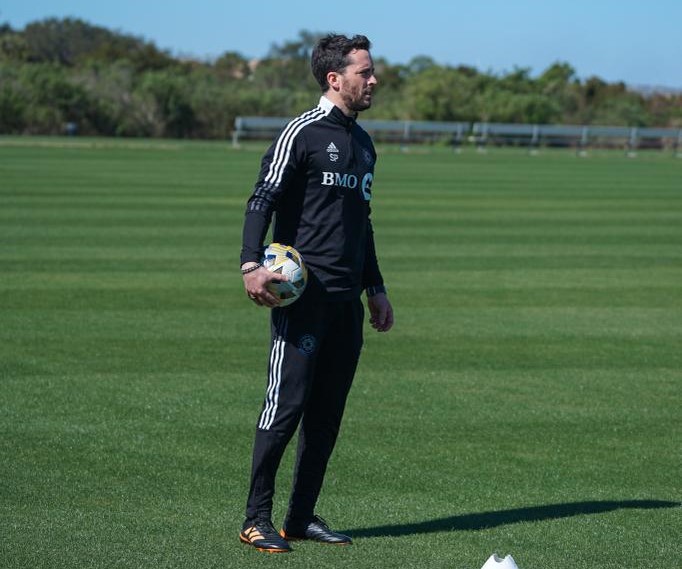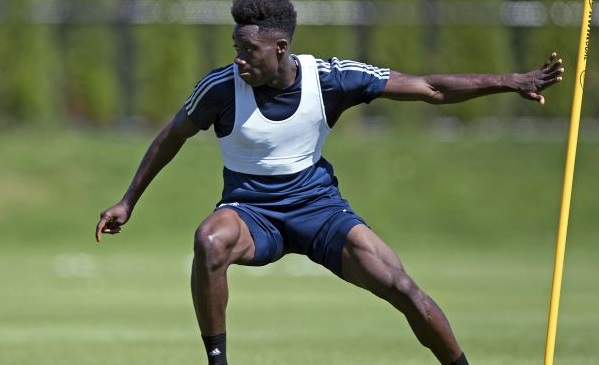
16 Aug Harnessing Data and Video for Player Performance Development: An Insider’s Perspective
In this interview, we delve into a conversation with Stefano Pasquali about current technology and best practices in physical preparation and performance monitoring.
Stefano, a skilled physical trainer and football coach, earned his degree in Sports Sciences and holds a UEFA B certification. His journey with Bologna Fc began in 2005, where he has guided all categories of their soccer school and academy. In 2014, his responsibilities expanded to managing the first team’s workload, athlete management, and injury recovery. Recently, he added another milestone to his career by joining CF Montréal in the MLS in 2022, playing an instrumental role in bridging the philosophies and methodologies of the two clubs, which share the same ownership. His expertise and dedication significantly contribute to the success and growth of Montréal, which finished last season in second place in the Eastern Conference, a notable jump of 8 places from the previous campaign.
What tools/technologies do you use to aid decisions in your work? How do you use data to support the technical staff?
For external load we use GPS, which has become a firmly established tool in soccer. For the internal load, we administer a questionnaire to the athlete through an app where they answer questions about their health status. For example, they evaluate the quality of their sleep, and whether they have recovered after the match. This is obviously correlated with the external load. Other parameters we monitor include heart rate variability and BIA (body composition), that change depending on the stress periods of the athlete, not just work but also private life. In addition to these metrics, we consider tactical-technical metrics that the video analyst presents us with. Overall, there is a considerable reliance on qualitative evaluations, but certainly there are many data at disposal and many people composing the staff. I think what’s important is the ability to summarize: select some KPIs, those most relevant to your style of play and your goals, and interpret them correctly.
How can data be integrated with video for practical use?
Video plays a crucial role. Everyone involved in the project should use video alongside data, from the coach to the analysts, therapists, and doctors. A tool such as SportAnalytics saves much time as it allows us to get specific video clips of the athlete to closely monitor their performance. As far as we trainers are concerned, I like to review the moments in the match where the player had performance peaks to re-evaluate their movements. It’s beneficial to replicate these same movements in training, through targeted on-field drills, which can help the athlete be ready from an athletic point of view and also improve in movements from a technical perspective, for change of direction or fast running.
How does the team’s playing style influence the players’ preparation?
Here’s an important point to note: for a “modern” fitness coach, it is crucial to have technical and tactical knowledge. This is to best manage certain training stages, such as ball exercises or match simulations.
Going back to your question, there are different game phases: defensive and offensive phases and the two transitions, which can make different demands depending on the style of play a coach may want to introduce. Some want quick ball recovery, others in the defensive phase prefer to cover space; some prefer man-marking, others zone marking. These different ideas make the requests different.
For example, a player who plays in a defensive team has runs that will be aimed at their own goal, keeping their gaze on the ball carrier. So, a typical run involves a leaning of the torso towards the ball. The player who plays in a team that wants to quickly regain possession will instead witness large accelerations by those closest to the ball, but not only.
The same applies to the possession phase: last year we played with 3 defenders and 5 midfielders, and our possession was very compressed in front of our goal. This made the energy expenses of the 3 central defenders less impactful, but required greater technical qualities from them. This year we are pursuing greater verticality and quick play, pushing the defenders to run forward; this playing style lends itself to easy front changes, numerous transitions, and each time possession changes, the type of running changes and in training we must work to be prepared to face these types of situations.
The schema also has a significant impact: with the 352 the wings have to run a lot and at high speed, so they must be specially prepared: in this case, we work heavily on hamstring, which is the first muscle group involved in misfortunes during a season. Thus, going back to what I was saying at the start, it’s important for the trainer to know the technical-tactical side of football because certain choices have significant repercussions on our work.
Which statistics do you consider most valuable for your work?
The statistics we look at are numerous, for example, for external load: distances covered, number of sprints, sprint lengths, accelerations, changes in direction. Analysis of external load accompanies the assessment of internal load: the athlete completes a daily questionnaire evaluating their physical and mental wellbeing, using parameters such as RPE (rating of perceived exertion) and sleep quality.
Collecting these data is crucial for having accurate information on the athlete’s performance, monitoring them daily, particularly on match day and the days that follow. There’s no one-size-fits-all approach. The way an athlete interprets the game changes each time: they might play for 20 minutes and stay on the sidelines, or play 20 minutes and be central to the team; for this reason, it is important to always have data available to find precise confirmations. As trainers, our role is to inform the coach about the athlete’s physical condition and health status. These are challenging questions, and it’s impossible to provide definite answers, but tools like the SportAnalytics platform help significantly: they bring objectivity to the decision-making process, allow clear communication with staff members, and provide benchmarks of past performances. For this purpose, we also created KPIs that consider multiple statistics, aiming to provide a concise piece of information.
Can data analysis assist in monitoring a player who is recovering from an injury?
Absolutely! The goal when I work with an injured athlete is firstly to return to normal and then train for specificity (ball training practice). In the case of an injury that results in a motor deficit, such as a hamstring injury involved in fast running, the player is monitored on a daily basis during training, and my task is to “rebuild the capacity” to run a certain distance. In this sense, it is very helpful to use data (e.g. GPS), providing objective and accurate information, along with training video, to monitor performance before and after the injury. Initially, the athlete works individually, gradually, we attempt to reintegrate them with the team on training days when the workload is compatible with their rehabilitation phase.
How do you handle the management of players who are also part of national teams? Are you in possession of their performance data when they are away from the club?
Each football federation has different rules, staff, and customs. Having players who play for many different national teams, it’s not easy to establish a dialogue with the national teams to get continuous monitoring of the athlete’s performance when they’re not at the club. The availability and collection of data may vary. For example, in monitoring a footballer’s athletic performance, there are no common practices or standardized language. Different tools are used, there are different definitions with variable thresholds: for example, when analyzing accelerations, you can count repetitions or measure the distance above a certain speed threshold, you can include or exclude changes of direction… in short, there are endless variants, so comparing non-homogeneous data can be misleading. Another aspect to consider is that often data is considered sensitive material to disclose, and not everyone is willing to share it, although such behavior may harm the welfare of the athlete. I believe that encouraging greater collaboration and fostering a more open approach to sharing information could potentially be beneficial for all parties involved: the athlete, the club, and the national team.
Given that CF Montréal has a unique fully-enclosed stadium, does this present any challenges for typical wearable GPS devices? If so, are there alternative methods for securing precise metrics?
In Montréal, January temperatures, when the season starts, can reach -10° Celsius. Training outside is not possible, so they’ve built a large 70,000 seat closed stadium with a semi-rigid roof. This set-up only allows GPS to receive weak satellite signals. So, we consulted our supplier, who also works in the basketball sphere where all the arenas are indoor and GPS usage is starting to increase. They suggested a GPS with an accelerometer and gyroscope, which provides information on vertical acceleration and mechanical load. For us, this extra data point complements our standard GPS information, and we’re exploring how to harness it effectively. With standard GPS, two players who cover the same distance at the same pace appear to carry the same load. However, with these new GPS devices, we gain insights into running techniques, because they also take into account the vertical component of movement. This season is our first using these tools, and we are focused on gathering data to have reference points for individualising player load and better preparing for next season’s pre-season.
Alternatively, an equally valid but currently more expensive tool is optical tracking data, obtained from cameras installed within the stadium.


